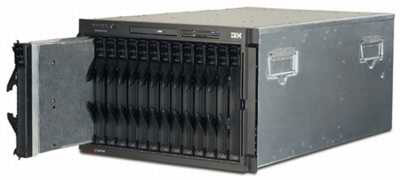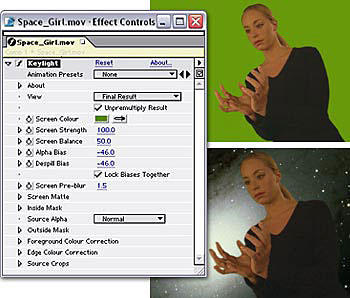Under the Desktop: The Real Nitty Griddy

Technology that can beef up the performance of either hardware or software is always of interest to professional content creators, whatever their medium of expression. Likewise, the demands of digital-video applications, especially for the generation of high-resolution effects, can eat up the performance of most mainstream computing platforms on the market.
To no surprise, technologists and vendors keep reaching into their bags of tricks for a new solution to our performance-hungry workflows.
As mentioned in earlier columns, there are many routes to improving the performance of a creative workstation: speedier processors, 64-bit architecture, more memory, faster storage. Some pros suggest running the fastest available processor, while others point to using a pair of processors, even if they’re slower (because some computing operations can be sped up by two slower processors, over the performance found in a single faster one).
Despite the debate, these potential performance gains are mostly limited to the resources that can be packed into a single workstation.
What if, instead, you could draw on the power of more than a couple of processors? Many more. And what would be the actual performance of your applications?
Enter “grid” or distributed parallel computing.
Put a Grid On It
A prime example of this trend was on display for video and broadcasting professionals at last month’s NAB2004, the annual shindig of the National Association of Broadcasters in Las Vegas.
The technology featured in the announcements by GridIron Software Inc. The company demonstrated its X-Factor software for Adobe Systems Inc.’s After Effects Professional 6.5, which was introduced at the show.
As the name suggests, the company makes grid computing technology, also known as distributed or clustered computing. From a birds-eye view, these are all ways to get multiple computers working on the same problem. They differ in some important ways, especially where it comes to your pocketbook.
The goal of grid architecture extends the power of the computer application beyond its base system to other computing resources. Some can be in the box or nearby, while others can be further away.
This concept has been offered for high-performance computing solutions for a surprisingly long time, some even in the content creation market. For example, in the early 1990s, the now defunct Radius Inc. spent millions developing the Rocket, a line of expensive co-processor cards for NuBus-based Macintosh II machines (see Figure 1). The cards sported a proprietary hardware interface that let them talk with one another and RocketShare, the software enabled the use of multiple processors. Remember, this was long before a time when Windows or Mac workstations supported multiple processors out of the box.
 Figure 1: This Radius Rocket card was based on a Motorola 68040 processor and provided slots for RAM. Users could pack more than one processor in a system, using the RocketShare software and customized applications that supported the multiple processing.
Figure 1: This Radius Rocket card was based on a Motorola 68040 processor and provided slots for RAM. Users could pack more than one processor in a system, using the RocketShare software and customized applications that supported the multiple processing.
Despite these efforts with creative applications, most of the advances in grid computing have taken place in the scientific and technical market. Much of the work deals with systems that sound similar to the ancient Radius Rocket, except much bigger in scale.
Server vendors offer “blade clusters,” which is a form of grid computing. Each computer blade is a removable logic board, similar to the hard drive modules in a RAID server (see Figure 2). These units can hold a dozen blades or even more, such as 64 and 128 computers, both convenient digital numbers. Each blade system connects to each other through a high-performance interface.
 Figure 2: Called the Mascot Cluster, this IBM BladeCenter system can handle 13 blades, one is called a master blade and then there are 12 more slave blades held in the 19-inch rack unit. Each blade can hold two processors. If more processing power is needed then as many as six more of the packages can be added, comprising 164 processors per industry-standard 19-inch rack.
Figure 2: Called the Mascot Cluster, this IBM BladeCenter system can handle 13 blades, one is called a master blade and then there are 12 more slave blades held in the 19-inch rack unit. Each blade can hold two processors. If more processing power is needed then as many as six more of the packages can be added, comprising 164 processors per industry-standard 19-inch rack.
Apple also offers a variety of “computational grids” for its Macintosh platform. One in the news late last year was the Terascale Cluster project at Virginia Polytechnic Institute and State University. The first version of it was built not out of blade systems, but ordinary, full-size Power Macintosh G5 desktop systems. It takes up an entire room.
Reports circulating online suggest that Apple will extend its grid technology to the company’s video content creation applications.
X-Factor Marks the Spot
The X-Factor product show at NAB is a scaled-down version of GridIron’s XLR8 technology — used by sci-tech institutions and big clustered supercomputers — to boost performance of After Effects Pro 6.5, due out this summer (see Figure 3). The grid software is provided in the form of a standard After Effects plug-in.
 Figure 3: Adobe After Effects Professional 6.5 comes with the Keylight tool from The Foundry, improving performance for hair, reflections, and semi-transparent areas. It supports secondary mattes and provides tools to erode, soften and fuss with mattes.
Figure 3: Adobe After Effects Professional 6.5 comes with the Keylight tool from The Foundry, improving performance for hair, reflections, and semi-transparent areas. It supports secondary mattes and provides tools to erode, soften and fuss with mattes.
According to Gord Watts, vice president of marketing for the Ottawa-based GridIron, X-Factor lets “ordinary users take advantage of a grid.”
He said the usual approach to sci-tech grid computing requires a special middleware that sculpts and divides up the computing job for the application. The system usually requires considerable attention from software developers and managers to administer the grid and keep it functioning.
On the other hand, X-Factor is a “plug-and-play proposition,” Watts said. Instead of requiring a rigid set of hardware and software for the grid, the software uses the company’s AutoGrid peer-to-peer agent installed on each machine on the network, for both Macs and PCs, and desktop and notebooks. The agents communicate with After Effects on the machines and inform the user what resources are available at a particular time for processing a job.
The performance gain sounds considerable. Watts said two extra machines, called nodes, connected in a grid will double the performance of one workstation. In addition, the technology can scale to 50 or 100 more nodes. Of course, the actual performance gain will depend on the particular machines in the grid (each computer’s level of performance, installed memory, etc.) and the speed of the network interface.
At NAB, the company demonstrated the performance available from a grid made of 16 additional machines when processing a 6-second clip of high-definition video. This is a place where more is better — or necessary. On a single, dual-processor computer, crunching a 1,080-by-720-pixel preview at 30 frames per second takes 16 minutes. With the grid, the preview comes up in 1 minute.
GridIron will offer a free Basic Edition, which supports two extra machines on the grid. Since it’s waiting on the release of the Adobe software, you can sign up to be notified of its availability. The cost of additional nodes was unavailable.
Meanwhile, the management interface looks very convenient. For example, an Audit button lets you check if the node machines have the resources, such as fonts, needed to process a job.
In addition, the software lets you manage the distributed systems from your primary desktop, even disseminating the project files automatically before rendering the clips. Or you can pick and choose which systems will be added to a particular job, in case one system might be needed for another task.
Changing Expectations in Workflow
Some might wonder about the difference between GridIron’s technology and taking advantage of the current distributed computing solutions in render farms. A number of vendors offer rendering software that you can purchase, or you send files to remote rendering services.
The primary difference is that render farms come into the workflow at the end of a project. When everything is done, only then is the job sent out to the distributed rendering engine. However, Watts said GridIron’s X-Factor improves performance of both rendering and preview, the latter being something that’s done many times during an editing job.
Sean Safreed, co-founder of effects plug-in vendor Red Giant Software, said X-Factor could extend the use of After Effects in production workflows. He said it’s difficult to use After Effects for working in real-time editing sessions with clients as well as to set up and manage render farms.
Often production houses must use expensive, high-performance workstations and different tools when the producer and director work over the shoulders of the editor.
“You can go to a certain point [with After Effects], but when you want to preview, it all slows down for 20 minutes or more. With the Gridiron plug-in that 20 minutes can be cut to a single minute. This totally changes the way you can work with After Effects,” Safreed said.
Currently, these products are mostly aimed towards the high-end of the market, or specific applications in video or effects generation. As time goes on, content creators can look forward to grid technologies moving to other content applications such as still image editing or layout.
This is a compelling part of the grid-computing story. Grids look to be more than a way to extend our investment in hardware and improve performance.
However, the greatest investment we make in our digital workflow is in knowledge and experience. It’s in the time we spend learning software tools and how to use them to create compelling images. Watts calls them “life-skill tools.”
The rabbinic saying says: “Nothing is difficult — if you only know how.” In this case, the grid can extend the reach of After Effects users to new workflows and new projects. And it lets customers avoid having to learn other tools and hardware.
This article was last modified on January 18, 2023
This article was first published on May 27, 2004



